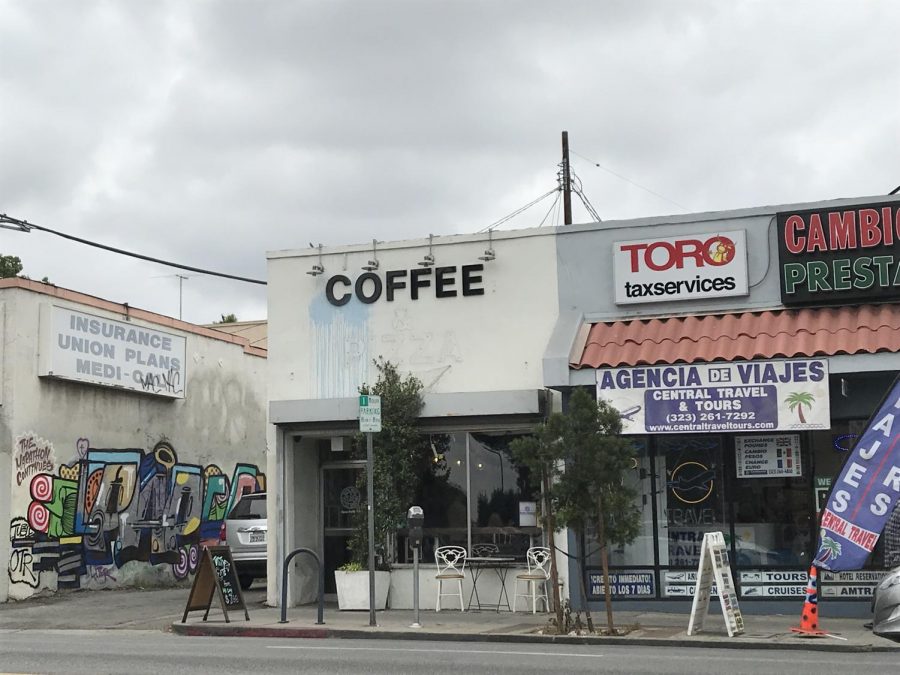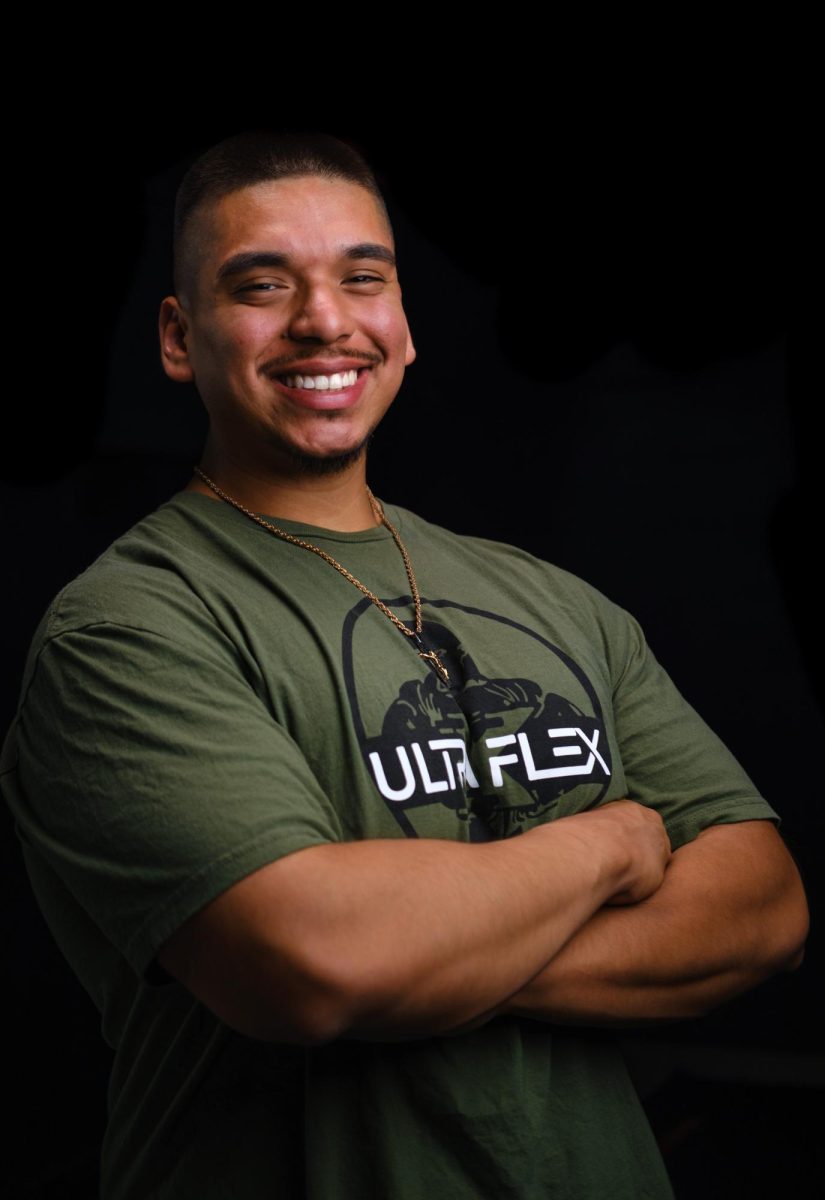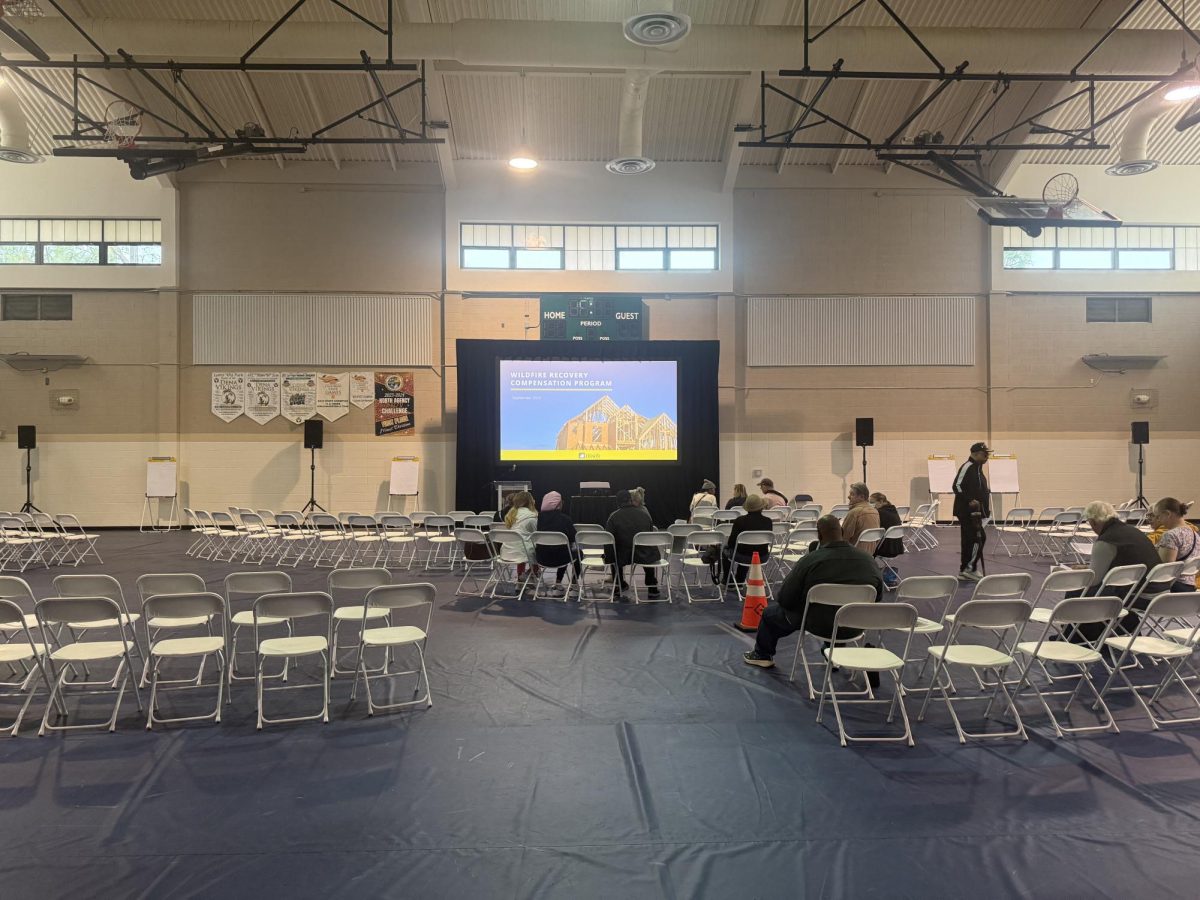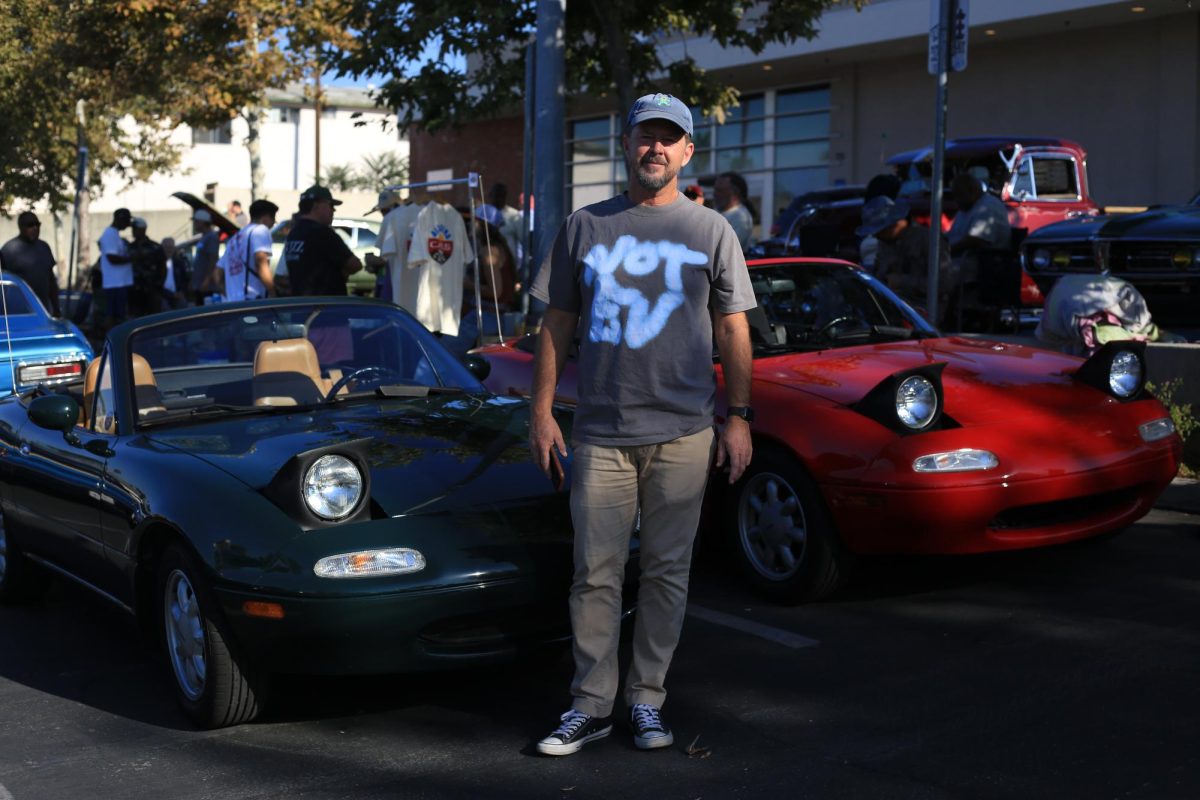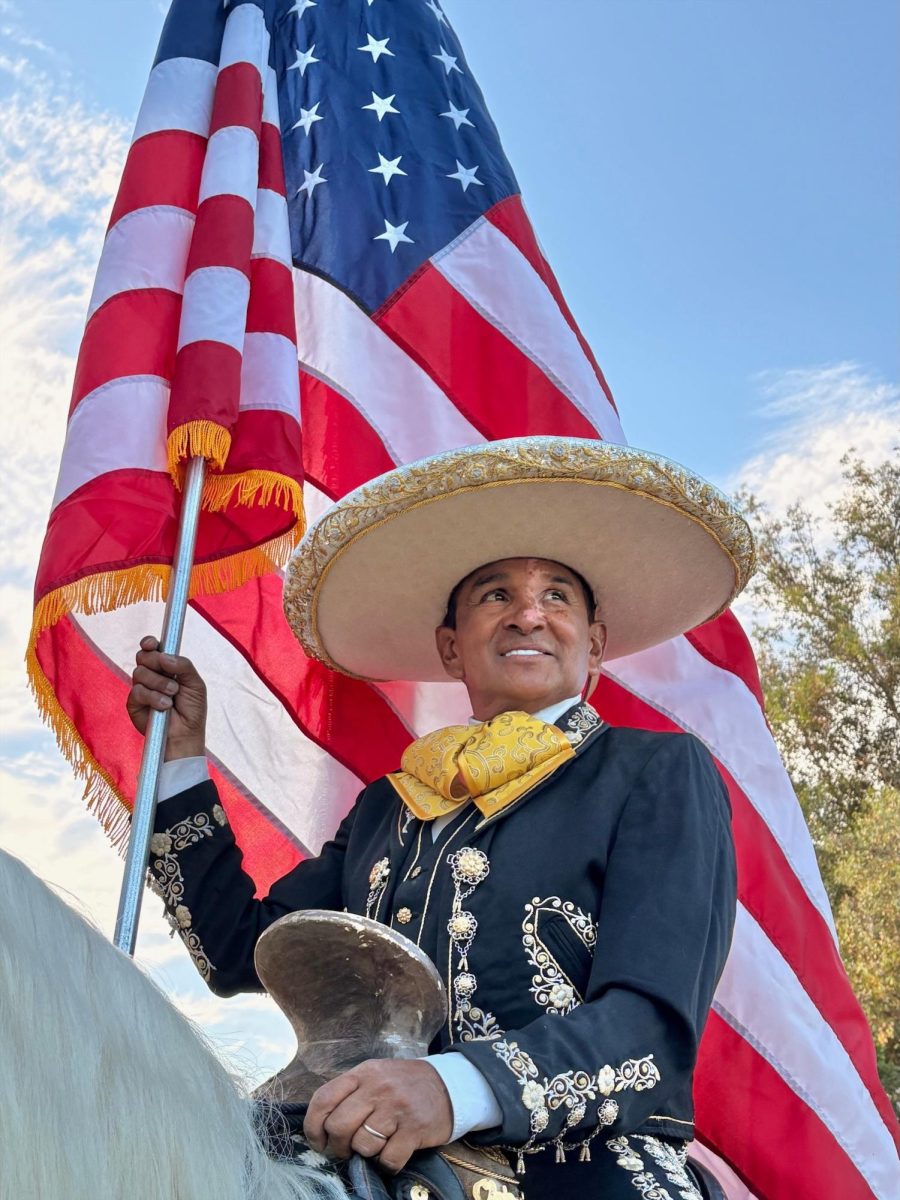Whether they like it or not, Boyle Heights residents are seeing new faces, freshly painted shops, and homes spruced up to appeal to newcomers. This, amid stretches of weathered buildings with barred windows, some with fading, colorful murals.
Some in the neighborhood are glad to have new options for food and shopping and increases to their home values. But recent changes in the area are also leading to resistance.
Demographic shifts in Boyle Heights aren’t new. In the mid-1930s, a large chunk of Boyle Heights’ population, about 35,000, people were Jewish. Other residents included African- and Japanese-Americans, along with growing numbers of Mexican Americans, according to a story on KCET public television’s website. But within decades, Mexican Americans made up most of Boyle Heights’ population.
At this point, over 90 percent of the Boyle Heights population is Latinx, so that’s the community most affected by the city’s housing crisis — an effect of property values “rising disproportionately to income,” according to the Boyle Heights Property, Ownership, Displacement, and Recommendation Report, done last year by the nonprofit Leadership for Urban Renewal Network. The group was recently renamed, “Inclusive Action for the City.”
Early last year, tenants of an apartment complex near Mariachi Plaza received notices that their rent would increase by almost 80 percent, according to Curbed Los Angeles. The residents held an almost yearlong strike on rent payments, which resulted in the tenants striking a deal with the landlord.
“They have made it very clear that they have as much, if not more, of a right to stay in their community as real estate developers with financial capital to invest or even well-intentioned liberals promising to bring art and culture,” said Magally Miranda Alcazar, a Boyle Heights native in an email interview.
Alcazar, a graduate student in Chicana/o studies at UCLA, added, “Boyle Heights has become a kind of ground-zero for the fight against gentrification in a way that has implications far beyond the local. Boyle Heights’ majority Latinx immigrant residents and their allies have become international news.”
Activists say they worry that the neighborhood’s rich history and culture may be wiped out.
“Walking around my street, I’ve encountered unfamiliar people,” said Kevin Lugo, a lifelong Boyle Heights resident. “I know people who have been forced to move out of their houses so that the ‘gentrifiers’ can build apartments for wealthy people.”
“People in my community have brought so much [here] just for some overpriced coffee shops to suddenly pop out,” he added.
One coffee shop in Boyle Heights that has drawn ire from residents is Weird Wave Coffee Brewers.
Jackson Defa, an owner of Weird Wave Coffee Brewers, said he and his partners opened the coffee shop in the heart of Boyle Heights because it fit their price range and there weren’t many coffee shops there.
The shop was attacked with blue paint splattered on its facade and its windows smashed, according to multiple news reports.
Worse yet, Defa said, was when “a group of ‘anti-gentrification’ protestors attempted to convince people online that we were somehow white supremacy KKK people.”
Ironically, one of the three owners is Salvadorian and grew up in Inglewood and another is Jewish, according to Defa.
The protestors’ allegations led to some very unwanted sympathy. For instance, a few folks from 4Chan — a website that has bred, among other things, racism, homophobia and violence — backed the coffee shop.
“It caught fire on, of all places, 4Chan – and suddenly real Nazi-ass people from somewhere else [such as other states] started posting things online saying they stand with us,” Defa said.
He added, “People who conflate the opening of a coffee shop with gentrification are perhaps missing the economic issues that drive gentrification. If it’s about residential property values changing hands, a business leasing a space that was vacant for nearly a year hardly seems like the correct place to focus your efforts.”
Buildings in the area like those on 1st and Fresno streets have been sitting empty for years. At the very least, Defa said shops like his strive to provide jobs and contribute to the local economy.
He said, “We have always striven to operate a community-oriented business by buying locally whenever possible and hiring local kids and teaching them how to barista.”
Disclosure: The author of this article attended high school with Kevin Lugo, one of the sources quoted.
Cambios y Resistencia en Boyle Heights
El vecindario bajo constante transformación es un blanco para el activismo
Por Meghan Bravo
Traducción por Luis Chavez y Fernanda Hernandez
Les guste o no, a los residentes de Boyle Heights ahora están viendo caras nuevas, locales recien pintados, y casas arregladas para atraer a primerizos. Esto, en medio de tramos de edificios desgastados con ventanas enrejadas y algunos con murales coloridos desvaneciéndose.
Algunos en el vecindario se alegran de tener nuevas opciones de comida y compras, e incrementos en el valor de sus casas. Pero los cambios recientes en el área también está llevándolos a la resistencia.
Los cambios demográficos en Boyle Heights no son nuevos. A mediados de la década de 1930, una gran parte de la población de Boyle Heights, unas 35,000 personas eran judías. Otros residentes incluyeron afro americanos y japoneses americanos, junto con un número creciente de mexicoamericanos, según una historia en el sitio web de la televisión pública KCET. Pero en pocas décadas, los mexicoamericanos formaron la mayor parte de la población de Boyle Heights.
A este punto, más del 90 por ciento de la población de Boyle Heights es latinx, por lo que está es la comunidad más afectada por la crisis de viviendas de la ciudad — un efecto del valor de propiedad que está “aumentando desproporcionadamente a los ingresos,” de acuerdo al Boyle Heights Property, Ownership, Displacement, and Recommendation Report, realizado el año pasado por Leadership for Urban Renewal Network, una organización sin fines de lucro. El grupo fue renombrado recientemente como “Inclusive Action for the City.”
A principios del año pasado, los inquilinos de un complejo de apartamentos cerca de Mariachi Plaza recibieron avisos que su renta aumentaría por casi un 80 por ciento, según Curbed Los Angeles. Los residentes mantuvieron una huelga de casi un año sobre los pagos de renta que resultó en que los inquilinos llegaran a un acuerdo con el dueño.
“Han dejado muy claro que tienen tanto, si no más derecho a permanecer en su comunidad como desarrolladores de bienes raíces con capital financiero para invertir o incluso liberales bien intencionados que prometen traer arte y cultura”, dijo Magally Miranda Alcazar, nativa de Boyle Heights en una entrevista por correo electrónico.
Alcazar, una estudiante de posgrado de Chicana/o studies en UCLA, agregó: “Boyle Heights se ha convertido en una especie de zona cero para la lucha contra la gentrificación de una manera que tiene implicaciones mucho más allá de lo local. La mayoría de los inmigrantes latinx de Boyle Heights y sus aliados se han convertido en noticias internacionales.”
Los activistas dicen que les preocupa que la historia y cultura rica del vecindario pueda ser eliminada.
“Caminando por mi calle, me he encontrado con personas desconocidas”, dijo Kevin Lugo, un residente de Boyle Heights de toda la vida. “Conozco personas que se han visto obligadas a mudarse de sus casas para que los ‘gentrificadores’ puedan construir apartamentos para gente adinerada.”
“La gente de mi comunidad ha traído mucho [aquí] como para que algunas cafeterías demasiado caras vengan de repente,” agregó.
Una cafetería en Boyle Heights que ha provocado la ira de los residentes es Weird Wave Coffee Brewers.
Jackson Defa, un propietario de Weird Wave Coffee Brewers, dijo que él y sus socios abrieron la cafetería en el corazón de Boyle Heights porque se ajustaba a su rango de precios y no había muchas cafeterías allí.
La tienda fue atacada con pintura azul salpicada en su fachada y sus ventanas rotas, según múltiples informes de noticias.
Peor aún, Defa dijo, fue cuando “un grupo de manifestantes de ‘anti-gentrificación’ intentaron convencer a la gente en el internet que de alguna manera éramos personas de la supremacía blanca KKK.”
Irónicamente, uno de los tres propietarios es salvadoreño y creció en Inglewood y otro es judío, según Defa.
Las acusaciones de los manifestantes llevaron a una simpatía muy indeseada. Por ejemplo, algunas personas de 4Chan, un sitio web que ha generado, entre otras cosas, racismo, homofobia y violencia, respaldaron la cafetería.
“Se incendió por todos lados, 4Chan – y de repente personas Nazi reales de otro lugar…comenzaron a publicar cosas en internet diciendo que estaban con nosotros,” dijo Defa.
Agregó: “Las personas que combinan la apertura de una cafetería con la gentrificación tal vez no ven los problemas económicos que impulsan la gentrificación. Si se trata de que los valores de las propiedades residenciales cambien de dueño, una empresa que arrienda un espacio que estuvo vacante por casi un año, es difícil que parezca el lugar correcto para enfocar sus esfuerzos.”
Edificios en el área como los de las calles 1st y Fresno han estado vacíos por años. Por lo menos, Defa dijo que tiendas como la suya, se esfuerzan para proveer empleos y contribuir a la economía local.
“Siempre nos hemos esforzado para operar un negocio orientado en la comunidad comprando localmente siempre que sea posible, contratando a la juventud local y enseñándoles el oficio de barista,” dijo el.

